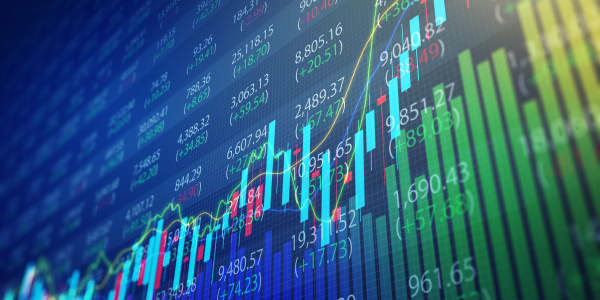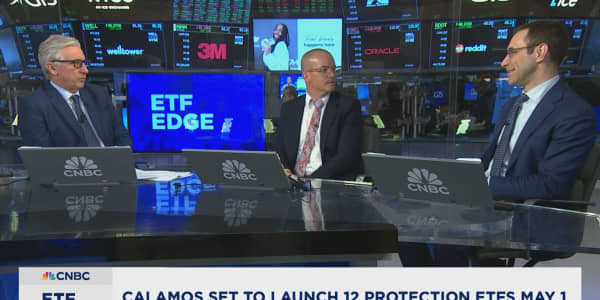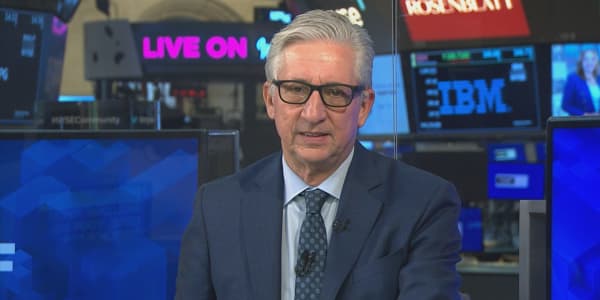
It's been a golden 15 years for the world's top gold ETF.
The SPDR Gold Shares exchange-traded fund (GLD), the largest ETF on Wall Street backed by physical gold, is celebrating its 15th anniversary this week, a notable milestone for the $42 billion fund that tracks one of the world's most popular commodities.
Launched on Nov. 18, 2004, the GLD was the first ETF to offer investors an easy and particularly cost-effective way to get indirect exposure to gold. Its shares cost 40 basis points, are priced at roughly one-tenth the cost of one ounce of gold, and are backed by real gold bars sitting in a secure vault.
"What we did, basically, was democratize the whole gold thing," George Milling-Stanley, vice president and chief gold strategist for SPDR ETFs at State Street Global Advisors, told CNBC's "ETF Edge" on Wednesday. "We took all the friction out of having exposure to movements in the gold price."
Up nearly 209% since inception, the GLD — also the most liquid gold ETF on the market — has also seen consistently strong inflows in its 15 years of existence, said Milling-Stanley, who was key in paving the way for the GLD when he was still a member of the World Gold Council.
"We're up $5.5 billion this year alone. I think that that's a fantastic performance, and I'm expecting further growth," the gold strategist said. "We've had turbulent financial markets and gold always does well."
Right now, one of the biggest drivers of demand for gold has been emerging market growth, Milling-Stanley, who has been called the "godfather of gold analysis," told CNBC's Bob Pisani.
"I think the heat is really in the emerging markets right now," he said. "Emerging market central banks have been significant buyers of gold, selling U.S. Treasurys, where they are massively overweight, and buying gold, where they are massively underweight, for more than a decade. That's continuing."
At the same time, "jewelry purchases in the emerging markets have held up very, very well even though economic activity's not as good as it was at the beginning of the century, and we're seeing increasing amounts of genuine investment demand in the emerging markets as well because they all have lousy currencies," he said.
This speaks to the truly multifaceted nature of gold as both a strategic investment and a hedge against broader market risk, Milling-Stanley said.
He added that while other ways of indirectly investing in gold, like buying gold-mining stocks, may provide outsized returns over a shorter time frame, one of the GLD's selling points is stability. Rather than being beholden to the performance of an underlying company's management team or its home market's performance, the GLD's price relies only on one thing: what's moving the price of gold itself.
"Gold basically improves the Sharpe ratio; it reduces the risk of your portfolio and it increases the returns," Milling-Stanley said. "That's a useful thing to do. It doesn't correlate with anything else in a typical portfolio, so it spreads your risk, it gives you diversification, it gives you an actual return in terms of capital appreciation even though there's no coupon or dividend."
As such, the idea of gold as a broad-based, institutional asset isn't going away anytime soon, Milling-Stanley predicted.
"Gold is so much more than any of the other commodities, any of the other metals or even any other asset," he said. "It's used as a commodity in jewelry. It's used as a commodity in industrial applications. It's an investment for the institutions and individuals that like it. It's a monetary asset for the central banks that are increasing their ownership of it. There's nothing else in the market that does all of those things."
The GLD is up about 14% year to date.





